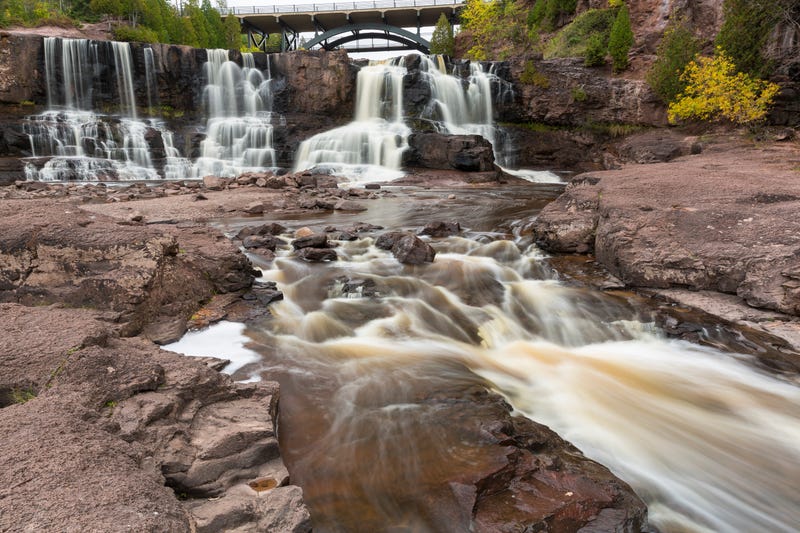
The iconic lower falls on the western side of the North Shore's Gooseberry Falls have been suffering like the rest of Minnesota, as drought has caused the cliffs to run dry. The rushing waters of many of the region's inland tributaries and rivers have slowed to a trickle over the past month.
Listen to your favorite News/Talk station now on Audacy.
Several waterways in the state have been much lower; residents shared that they could even walk into the middle of the Mississippi.
The Gooseberry River runs into the Gooseberry watershed and right now is flowing at a lower rate. According to Nick Hoffmann, an assistant park manager for Gooseberry Falls Park, it is not unusual for that side of the park to dry up; however, it is usually later in the summer, the Star Tribune reported.
"If this dry weather continues, there is a possibility the falls could dry up in late August," Hoffmann said, which has not happened in about 15 years.
Drought is just the latest thing that Minnesota has been dealing with this summer. Over the last week, poor air quality has been common throughout most of the state, caused in part by the Canadian wildfires, leaving a haze in the sky.
Nevertheless, the low water levels at Gooseberry Falls are a bit more complicated than just warm temps.
Low rain levels this summer have been a leading factor for the falls being dry. Exhausting stores of water in soils and wetlands will contribute to the flow of water in rivers, Diana Karwan said to the Tribune. Karwan is a hydrologist and associate professor at the University of Minnesota.
Throughout the year, stores of water created from rain and snow allow rivers to continue running without rain, but they are currently depleted, she said.
"What you are seeing at Gooseberry Falls now is resulting from what's happening this week and this month, but also over the course of the entire year, where it's been so dry," Karwan said.
"The question on my mind is, will the drought years become more common and get to a point where it's the new normal."
The Minnesota Sea Grant director, John Downing, said that he thinks it's likely this may be the new normal, the Tribune reported.
"There's no doubt this will become more common," he said. He also shared that water quality will worsen due to the drought. One cause of the worsening water quality would come from the potential for more wildfires. With forest destruction comes wood ash, which affects water quality, Downing said.
The low water levels could also affect several other aspects, including tourism and fish populations. For example, with low water levels, lakes and ponds will freeze to the bottom, leaving no room for fish in the winter, killing them off.
Downing also spoke about how tourism will be affected.
"Not that many want to drive up the shore to see a dry cliff," Downing said. "We are known around the world for abundant, flowing, beautiful, clear water. If you draw down the groundwater, it takes a long time to build it back up."
Hoffman expects the river levels to be restored by the winter's snowpack, but he did mention that the trees are noticeably changing color, a sign of distress.
While park-goers are still making their way to northern Minnesota, they are commenting on the low water, according to Hoffman.
"They're asking if this is normal," Hoffman said.



